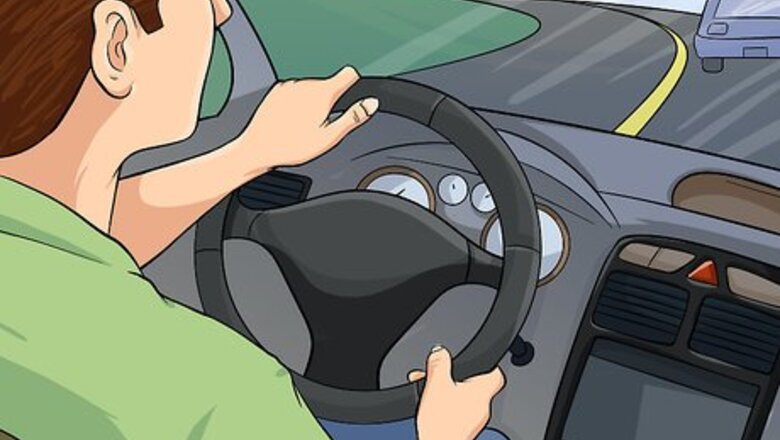
views
Correcting Understeer
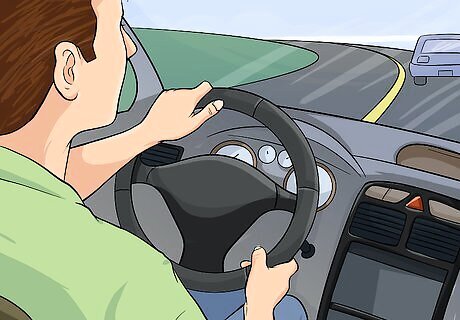
Identify that you’re in an understeer situation. The first and most important step to correcting understeer while cornering is mental. You need to recognize what the vehicle is doing as understeer in order to take corrective action to address it. Identifying that you are in an understeer situation is the only way you can know to correct it. Pay close attention to the response you get from your vehicle to identify understeer.
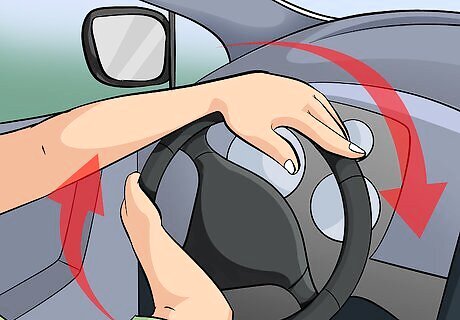
Control your natural response to understeer. When you turn the steering wheel and find the vehicle not responding by turning as much as it should, the natural response is to turn the wheel even more. Once that fails to work, the next natural reaction is to hit the brakes as you realize you have limited control of the direction the vehicle is traveling. These are both dangerous responses to understeer that can result in an accident. Turning more and hitting your brakes could lock the tires and remove any control you currently have over the vehicle. If the brakes do slow the vehicle quickly, the weight of the vehicle will shift onto the front wheels that are turned too far, resulting in the vehicle suddenly and wildly changing directions.
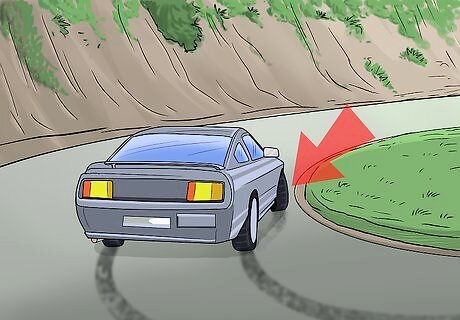
Unwind the steering wheel. Once you’ve realized that you are in an understeer situation, calmly return the steering wheel to straight. If you are in a corner, turn into the direction you are skidding slightly. This will align the wheels with the direction the vehicle is moving, allowing the tires to start turning again to create grip. Point the wheels in the same direction the vehicle is moving to allow the tires to start spinning again. Make sure to maintain total control of the wheel as you allow it to center itself.
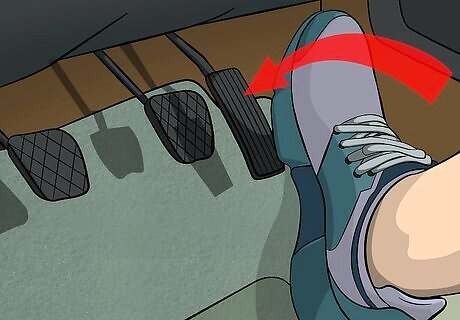
Ease off the throttle. While slamming on the brakes could result in locking up your tires, easing off the accelerator pedal will slow the vehicle in a more subtle manner. As the vehicle slows, the weight will transfer toward the front of the vehicle, adding to the traction your front tires are able to get. Be sure to straighten the wheel out before easing off the throttle to avoid the vehicle turning suddenly as grip returns to the tires. Easing off the throttle will only work if the tires are pointed in the direction the vehicle is moving.
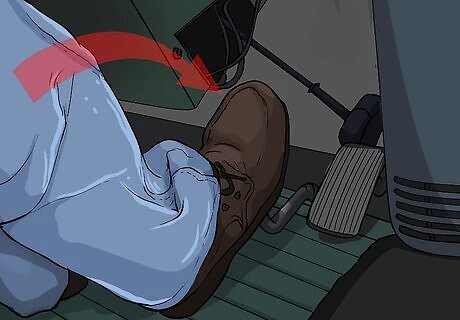
Apply brakes if need be. If easing off the throttle did not change the speed of the vehicle sufficiently to return traction to your front wheels, put your foot on the brake and apply them gradually to avoid locking the tires up again and losing steering control. Be careful not to press on the brake pedal too hard or abruptly. If you lock up the front tires under braking, take your foot back off the brake pedal to allow the wheels to begin turning again.
Identifying Understeer Situations

Prepare yourself mentally for understeer situations. It is common for drivers to panic or even freeze up when their vehicle fails to behave as anticipated. While this is natural, it is also extremely dangerous. Combat this by preparing yourself to identify understeer situations by looking for signs of it. The best way to avoid panic is to develop an understanding of what causes dangerous situations. You cannot correct understeer without identifying it.

Look for signs that the car is pushing as you turn. As you drive, pay attention to the way the car reacts to your steering input. If you turn the wheel to the left or right, but feel the momentum of the car carrying it forward rather than in the direction you’re trying to turn, you are in an understeer situation. In extreme understeer situations, the vehicle will not turn but will continue to go straight regardless of steering input. In less extreme situations, your ability to turn may just be limited.
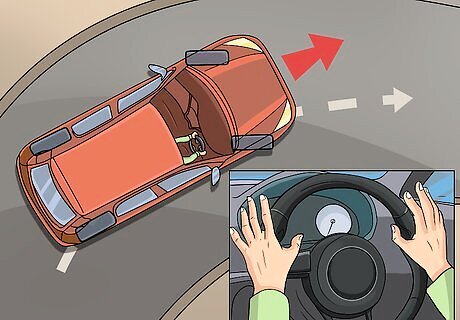
Feel for reduced resistance in the steering wheel. When understeer occurs, the vehicle is pushing forward despite your steering input. This means the front tires are sliding and don’t have the grip to change the car’s direction as you turn the wheel. That loss of grip will make the steering wheel feel suddenly lighter and easier to turn. When the steering wheel suddenly gets much easier to turn, be careful not to turn the wheel even further due to the loss of resistance. Some luxury cars may be more difficult to read steering resistance in due to their light wheel resistance to begin with.
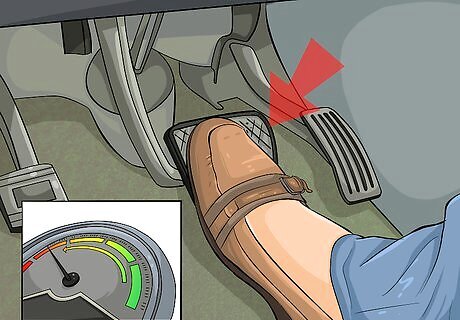
Pay attention to the pressure you apply to the brakes. Understeer commonly occurs due to a loss of traction in the front wheels, and because most vehicles do the majority of their braking with their front wheels, heavy braking can cause understeer. If you lock the tires up by slamming on the brakes, the front tires will not have the traction to affect change in the direction the vehicle travels. If you slam on your brakes and they lock up, the vehicle will understeer due to a lack of traction. Vehicle’s equipped with anti-lock brakes can still understeer due to heavy braking.
Avoiding Understeer
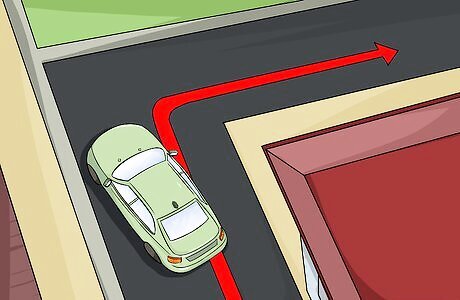
Brake prior to cornering. Your tires are only able to do one hundred percent of one thing, so if you attempt to brake and turn simultaneously, you could lose traction in your front tires resulting in understeer. You can avoid this issue by braking prior to the turn so you are less likely to lose grip. You are more likely to lock up your tires if you are turning and braking at the same time.
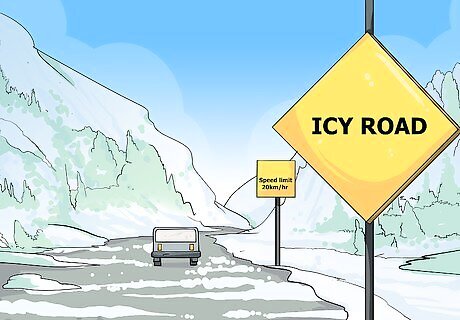
Travel at the appropriate speed for road conditions. Understeer is more likely to occur when there are other elements limiting the amount of grip available to your tires. Situations like heavy rain, snowfall or ice can all limit the traction of your tires and increase the likelihood of understeer. When traction is limited due to road conditions, drive slower and carry less speed into turns. Follow posted speed limits and pay attention for signs indicating a change in road surface.
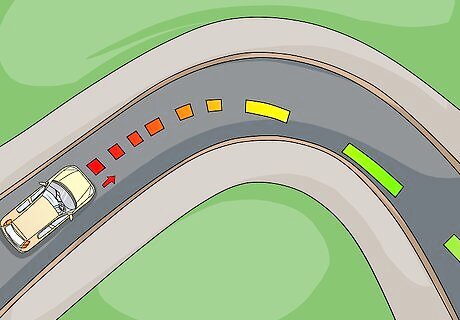
Use the rule of thumb “slow in, fast out” when cornering. An easy way to avoid understeer situations is to follow the old racing rule, “slow in, fast out.” That means to approach corners slowly, then accelerate out of them. This method will prevent you from being taken by surprise by steeper turns than you expect. When driving in unfamiliar areas, approach corners slowly, then accelerate once you know you can handle them. Roll onto the accelerator slowly as you accelerate out to avoid causing understeer inside the corner.
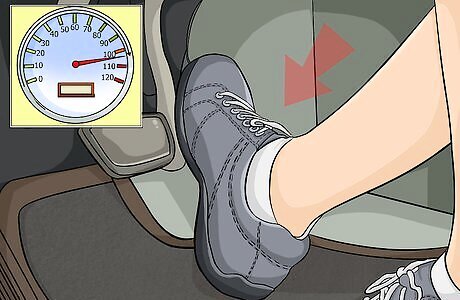
Avoid adding too much throttle as you turn. If you come into a corner slowly and realize you’d like to go faster, you may be tempted to accelerate quickly through the remainder of the corner. Remember that your tires traction will be compromised if you ask them to accelerate and corner simultaneously. Add throttle gradually as you turn to maintain traction in the tires. Front wheel drive cars are more prone to understeer as your accelerate because you may get front wheel spin if you give it too much gas.




















Comments
0 comment